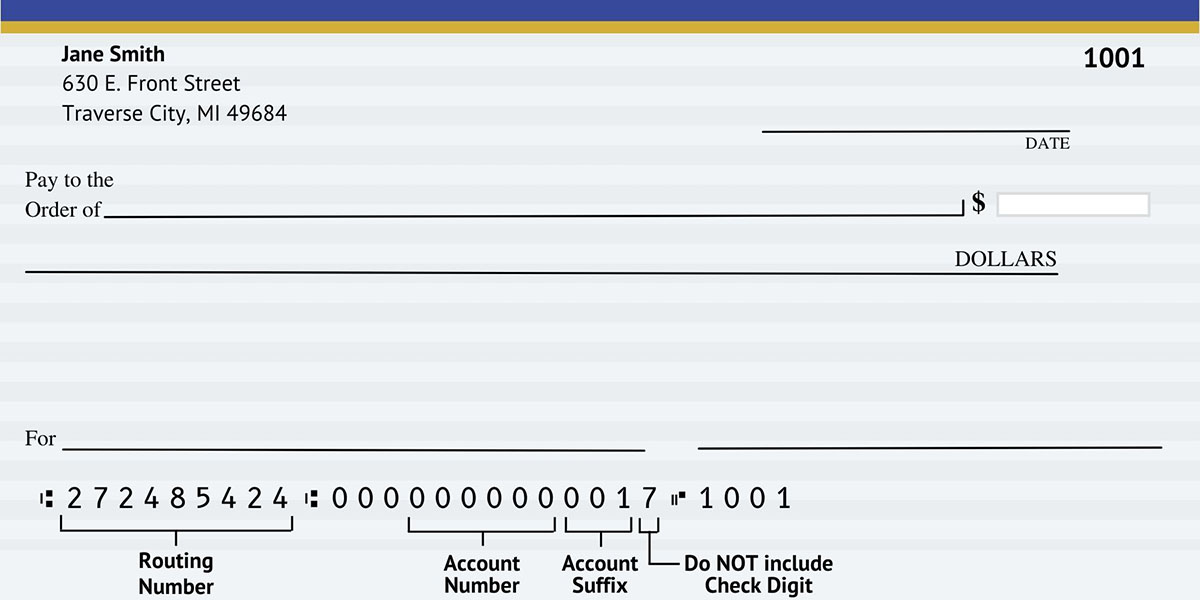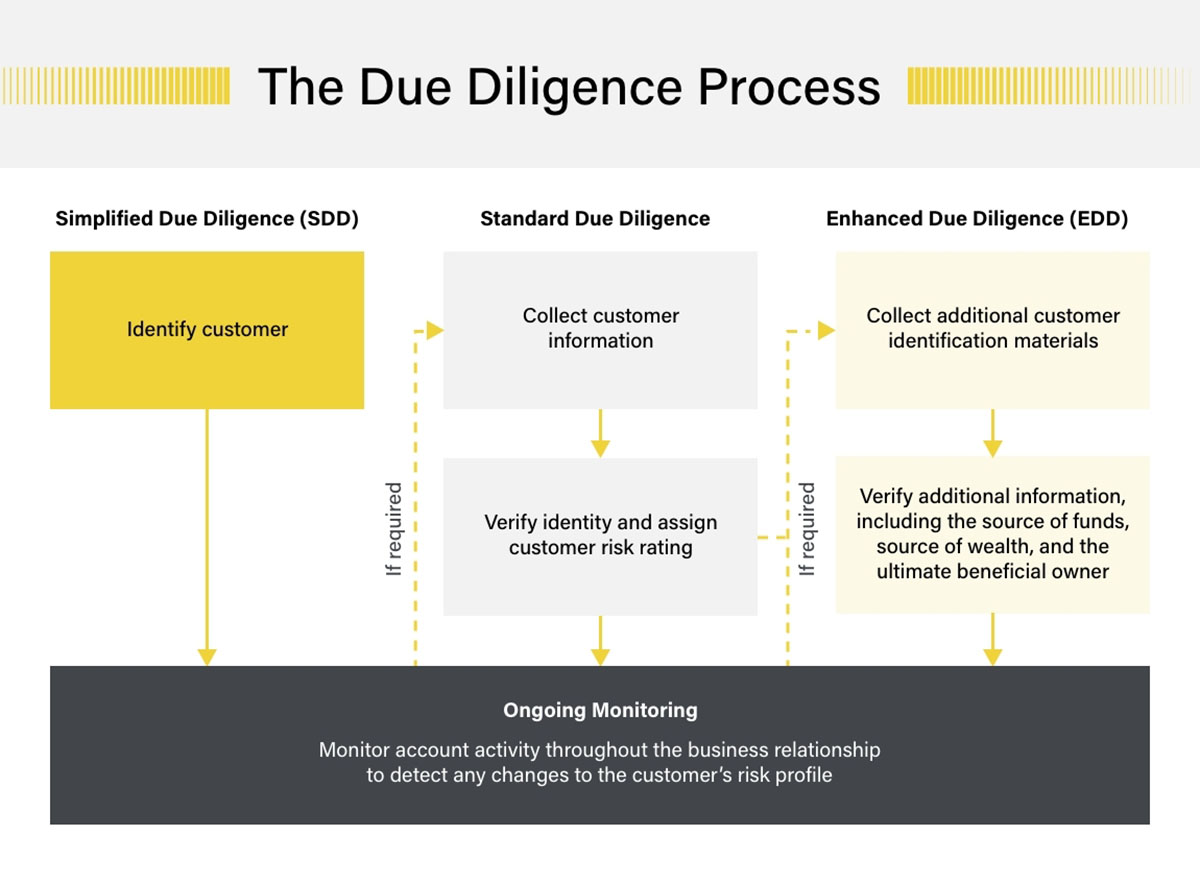

Finance
What Is MRA In Banking
Published: October 11, 2023
Discover the meaning of MRA in banking and its significance in the world of finance. Explore the role of MRA in monitoring risk and enhancing regulatory compliance.
(Many of the links in this article redirect to a specific reviewed product. Your purchase of these products through affiliate links helps to generate commission for LiveWell, at no extra cost. Learn more)
Table of Contents
Introduction
In the world of banking and finance, ensuring the safety and soundness of institutions is of paramount importance. One key aspect of maintaining this stability is the implementation of effective risk management. This is where MRAs, or Matters Requiring Attention, come into play.
MRAs are an essential component in the regulatory framework of banks and financial institutions. They are findings or concerns identified by regulatory agencies during audits or examinations. These findings highlight areas where banks need to improve in order to comply with regulations, strengthen their risk management practices, and ultimately safeguard the financial system.
The purpose of this article is to provide a comprehensive understanding of what MRAs are in banking and why they are significant. We will explore the different types of MRAs, the process involved in addressing them, and the challenges and limitations associated with their implementation.
By the end of this article, readers will have a clear grasp of the role MRAs play in the world of banking and the importance of addressing them to maintain a healthy and resilient financial system.
Definition of MRA in Banking
MRA stands for Matters Requiring Attention, which refers to findings or concerns that are identified by regulatory agencies during audits or examinations of banks and financial institutions. These findings highlight areas where the institutions need to improve their risk management practices, internal controls, or compliance with regulations.
When regulatory agencies conduct examinations, they assess the institutions’ adherence to various regulatory frameworks and guidelines. If they identify any deficiencies or weaknesses in an institution’s operations, they issue MRAs. These MRAs are essentially recommendations or directives for the institution to take corrective action to address the identified issues.
MRAs typically focus on areas such as risk management, compliance, internal controls, governance, and operational efficiency. They are intended to ensure that financial institutions are operating in a safe and sound manner, minimizing risk, and protecting the interests of stakeholders.
It is important to note that MRAs are not regulatory enforcement actions or fines. Instead, they are a means for regulatory agencies to communicate their concerns and expectations to the institutions and to work with them in rectifying any identified deficiencies.
Financial institutions are required to address MRAs promptly and effectively. This may involve developing and implementing action plans to mitigate the identified risks, improving internal controls and processes, enhancing compliance practices, or making necessary changes to their risk management frameworks.
Throughout the process, institutions are expected to maintain open communication and cooperation with the regulatory agencies. They are also required to provide progress updates and evidence of remediation efforts to demonstrate their commitment to addressing the MRAs.
In summary, MRAs in banking are findings or concerns raised by regulatory agencies during audits or examinations. They serve as directives for financial institutions to address identified deficiencies in areas such as risk management, compliance, and internal controls.
Importance of MRA in Banking
The implementation of effective risk management practices is crucial for the stability and resilience of the banking industry. MRAs play a vital role in achieving this objective by highlighting areas where banks need to improve their risk management processes, compliance with regulations, and overall operational efficiency. Here are some key reasons why MRAs are important in banking:
- Enhancing Risk Management: MRAs provide valuable insights into potential risks and vulnerabilities within financial institutions. By addressing these findings, banks can strengthen their risk management frameworks and ensure they have adequate controls in place to mitigate risks effectively.
- Promoting Regulatory Compliance: Compliance with various regulations and guidelines is essential for banks to operate lawfully and ethically. MRAs help banks identify any shortcomings in their compliance practices and facilitate the necessary adjustments to meet regulatory expectations.
- Safeguarding Financial Stability: The financial crisis of 2008 highlighted the importance of strong risk management practices. MRAs enable regulatory agencies to identify and rectify potential weaknesses within banks, contributing to the overall stability of the financial system.
- Protecting Stakeholder Interests: Financial institutions have a responsibility to protect the interests of their stakeholders, including depositors, shareholders, and customers. Addressing MRAs ensures that banks are operating in a manner that safeguards these interests and maintains the confidence of stakeholders.
- Improving Corporate Governance: MRAs often focus on governance concerns within financial institutions, such as board oversight and management practices. By addressing these findings, banks can enhance their corporate governance structures, leading to better decision-making and accountability.
- Promoting Operational Efficiency: MRAs may identify inefficiencies or operational gaps within banks. By addressing these issues, institutions can streamline their operations and processes, reducing costs and enhancing efficiency.
Overall, MRAs in banking are essential for improving risk management practices, promoting regulatory compliance, safeguarding financial stability, protecting stakeholder interests, and enhancing operational efficiency. By diligently addressing and remedying the identified concerns, banks can maintain a strong foundation that supports their long-term success and resilience in a complex and ever-changing financial landscape.
Types of MRAs in Banking
MRAs in banking can vary in their nature and focus. Each MRA represents a specific area where a financial institution needs to improve or address concerns. Here are some common types of MRAs that regulatory agencies may issue:
- Compliance MRAs: These MRAs address non-compliance with laws, regulations, or internal policies. They may pertain to issues such as anti-money laundering (AML) procedures, consumer protection, or data privacy.
- Risk Management MRAs: These MRAs relate to deficiencies in a bank’s risk management practices. They may cover areas such as credit risk, market risk, operational risk, or liquidity risk. The purpose is to ensure that banks have robust risk management frameworks in place.
- Cybersecurity MRAs: With the increasing importance of cybersecurity, these MRAs focus on identifying weaknesses or vulnerabilities in a bank’s information security infrastructure. They aim to ensure that banks are adequately protecting customer data and mitigating cyber threats.
- Internal Control MRAs: These MRAs highlight weaknesses in a bank’s internal control framework. They may include issues related to segregation of duties, reconciliation processes, or the control environment. The objective is to enhance the effectiveness of internal controls.
- Capital Adequacy MRAs: These MRAs evaluate a bank’s compliance with capital adequacy requirements. They assess whether a bank has sufficient capital to absorb potential losses and maintain stability. Capital adequacy MRAs focus on aspects such as capital ratios, capital planning, and stress testing.
- Operational MRAs: These MRAs deal with deficiencies in a bank’s operational processes and procedures. They may relate to areas such as document management, vendor management, or the quality of customer service. The aim is to ensure smooth operations and minimize operational risks.
- Governance MRAs: Governance MRAs address concerns related to board oversight, management practices, or the overall corporate governance structure. They aim to improve decision-making, accountability, and transparency within the institution.
It is important to note that these are just some examples of the types of MRAs that may exist in banking. The specific types and focus of MRAs can vary depending on factors such as the regulatory environment, the size and complexity of the institution, and emerging risks within the financial industry.
MRA Process in Banking
The MRA process in banking involves a series of steps that financial institutions must follow to address the identified MRAs. This process typically includes the following stages:
- Identification: The first step in the MRA process is the identification of MRAs by regulatory agencies during audits or examinations. This occurs when examiners identify deficiencies or concerns regarding the institution’s risk management practices, compliance, or internal controls.
- Communication: Once identified, the regulatory agency communicates the MRAs to the financial institution. This communication can take the form of a formal letter or report that outlines the specific areas of concern, the regulatory requirements or expectations, and any required corrective actions.
- Assessment: Upon receipt of MRAs, the financial institution assesses the findings and implications. This involves reviewing the identified deficiencies, analyzing the potential impact on the institution, and determining the priority and resources required to address the MRAs effectively.
- Action Plan: The next step is the development of an action plan to address the identified MRAs. The action plan outlines the specific steps, timelines, responsible parties, and resources needed to mitigate the identified deficiencies and meet the regulatory expectations.
- Implementation: Once the action plan is in place, the financial institution starts implementing the necessary changes and improvements. This may involve updating policies and procedures, enhancing risk management frameworks, strengthening internal controls, or enhancing compliance practices.
- Monitoring and Reporting: Throughout the MRA process, the institution monitors the progress and effectiveness of the implemented changes. Regular reporting to the regulatory agency is often required to provide updates on the remediation efforts and demonstrate the institution’s commitment to addressing the MRAs.
- Validation: When the regulatory agency deems that the financial institution has satisfactorily addressed the MRAs, a validation or closure process occurs. This process involves the regulatory agency reviewing the institution’s actions and determining if the deficiencies have been adequately remediated.
It is important to note that the MRA process may involve ongoing monitoring and periodic assessments to ensure sustained compliance and continuous improvement. Effective communication and collaboration between the financial institution and the regulatory agency are essential throughout the process.
By following the MRA process diligently, financial institutions can effectively address the identified deficiencies, mitigate risk, strengthen their operations, and demonstrate their commitment to regulatory compliance and sound risk management practices.
Addressing MRAs in Banking
Addressing MRAs in banking is a crucial step for financial institutions to demonstrate their commitment to regulatory compliance and strengthen their risk management practices. Here are some key considerations and actions that institutions should undertake when addressing MRAs:
- Evaluation and Prioritization: Financial institutions should carefully evaluate each MRA and prioritize them based on the level of risk and potential impact. This involves assessing the severity of the identified deficiencies and determining the resources and timelines required to address them effectively.
- Action Plan: Developing a comprehensive action plan is essential to systematically address the identified MRAs. The plan should outline specific tasks, responsibilities, timelines, and resources needed to rectify the deficiencies and meet regulatory expectations. It should be aligned with the institution’s overall risk management and compliance frameworks.
- Internal Controls Enhancement: Strengthening internal controls is often a key focus when addressing MRAs. Financial institutions should identify areas where internal controls can be enhanced to prevent or detect deficiencies. This may involve revising policies and procedures, improving segregation of duties, enhancing documentation and record-keeping practices, or implementing technology solutions.
- Compliance Measures: Compliance with regulatory requirements is a critical aspect of addressing MRAs. Financial institutions should review and enhance their compliance programs to ensure adherence to relevant laws, regulations, and guidelines. This may include conducting additional training, improving monitoring and reporting processes, and establishing robust frameworks for AML, consumer protection, or data privacy.
- Risk Management Strategies: MRAs often highlight deficiencies in risk management practices. Financial institutions should revise and improve their risk management frameworks to address the identified risks and vulnerabilities. This may involve enhancing credit risk assessment processes, implementing more robust market risk controls, or strengthening operational risk mitigation strategies.
- Communication and Cooperation: Open and effective communication with regulatory agencies is crucial throughout the MRA addressing process. Financial institutions should maintain regular contact with regulators, providing progress updates on the implementation of action plans and remediation efforts. They should also address any queries or concerns raised by the regulatory agencies promptly and transparently.
- Continuous Monitoring and Improvement: Once the MRAs have been addressed, financial institutions should establish mechanisms for ongoing monitoring and improvement. This includes periodically reviewing and assessing the effectiveness of the implemented changes, conducting internal audits or assessments, and making adjustments as necessary to ensure sustained compliance and risk management practices.
By undertaking these actions, financial institutions can effectively address MRAs, strengthen their risk management practices, enhance compliance, and foster a culture of continuous improvement. This not only helps in meeting regulatory expectations but also contributes to the overall stability, resilience, and reputation of the institution.
Challenges and Limitations of MRA in Banking
While MRAs serve as valuable tools for regulatory agencies and financial institutions, there are several challenges and limitations that need to be considered. These challenges can impact the effectiveness and efficiency of the MRA process. Here are some common challenges and limitations of MRAs in banking:
- Subjectivity: MRAs can sometimes be subjective, as they rely on the judgments and interpretations of regulatory examiners. Different examiners may have varying perspectives on the severity and urgency of identified deficiencies, which can lead to inconsistency in how MRAs are issued and addressed.
- Resource Constraints: Addressing MRAs can be resource-intensive for financial institutions, particularly smaller ones. Implementing the necessary changes and enhancements may require significant time, effort, and financial investment. This can pose challenges for institutions with limited resources and may impact their ability to address multiple MRAs simultaneously.
- Complexity: Some MRAs may involve complex issues that require expertise and specialized knowledge. Financial institutions may need to engage external consultants or experts to help address these challenges, further adding to the complexity and costs involved.
- Regulatory Burden: Financial institutions must comply with numerous regulatory requirements and guidelines, beyond the MRAs identified during examinations. This overall regulatory burden can pose challenges for banks in terms of managing and prioritizing various compliance and risk management initiatives.
- Timeliness: The process of addressing MRAs can sometimes be time-consuming, leading to delays in implementing necessary changes. The longer it takes to address MRAs, the greater the potential for the identified deficiencies to persist and pose risks to the institution and its stakeholders.
- Changing Regulatory Landscape: Regulatory requirements and expectations can change over time, requiring financial institutions to adapt and evolve their practices continually. This dynamic regulatory landscape can make it challenging for institutions to keep up with evolving MRAs and the associated remediation efforts.
- Interactions with Multiple Regulators: Financial institutions often interact with multiple regulators, each with their own set of expectations and requirements. Coordinating and aligning responses to MRAs from different regulatory agencies can be complex and time-consuming for institutions operating across multiple jurisdictions.
Despite these challenges and limitations, financial institutions recognize the importance of addressing MRAs and the value they bring in strengthening their risk management processes and compliance practices. By proactively managing these challenges and implementing sound strategies, banks can navigate the MRA process more effectively and ensure a resilient and compliant operating environment.
Conclusion
Matters Requiring Attention (MRAs) play a critical role in the regulatory framework of banks and financial institutions. They serve as important tools for identifying and addressing deficiencies in risk management practices, compliance, internal controls, and operational efficiency. By addressing MRAs, institutions can strengthen their operations, safeguard stakeholder interests, and contribute to overall financial stability.
In this article, we explored the definition of MRAs in banking, highlighting their purpose and significance. We discussed the importance of MRAs in enhancing risk management, promoting regulatory compliance, and protecting stakeholder interests. Additionally, we examined the different types of MRAs that regulatory agencies may issue, the process involved in addressing MRAs, and the challenges and limitations that financial institutions may face.
Addressing MRAs requires thorough evaluation, the development of action plans, strengthening internal controls, enhancing compliance practices, and continuous monitoring and improvement. Financial institutions must also navigate challenges such as subjectivity in MRAs, resource constraints, complexity, and the changing regulatory landscape.
By effectively addressing MRAs, financial institutions can demonstrate their commitment to regulatory compliance, strengthen their risk management practices, and maintain a resilient and trustworthy reputation. Through ongoing cooperation and communication with regulatory agencies, proactive measures, and a focus on continuous improvement, institutions can ensure a safe and sound operating environment while protecting the interests of their stakeholders.
In conclusion, MRAs in banking are valuable tools that promote risk management, regulatory compliance, and the health of the financial system. By addressing MRAs diligently and implementing necessary changes, financial institutions can contribute to a resilient and stable banking sector, ensuring their continued success in a dynamic and evolving industry.














